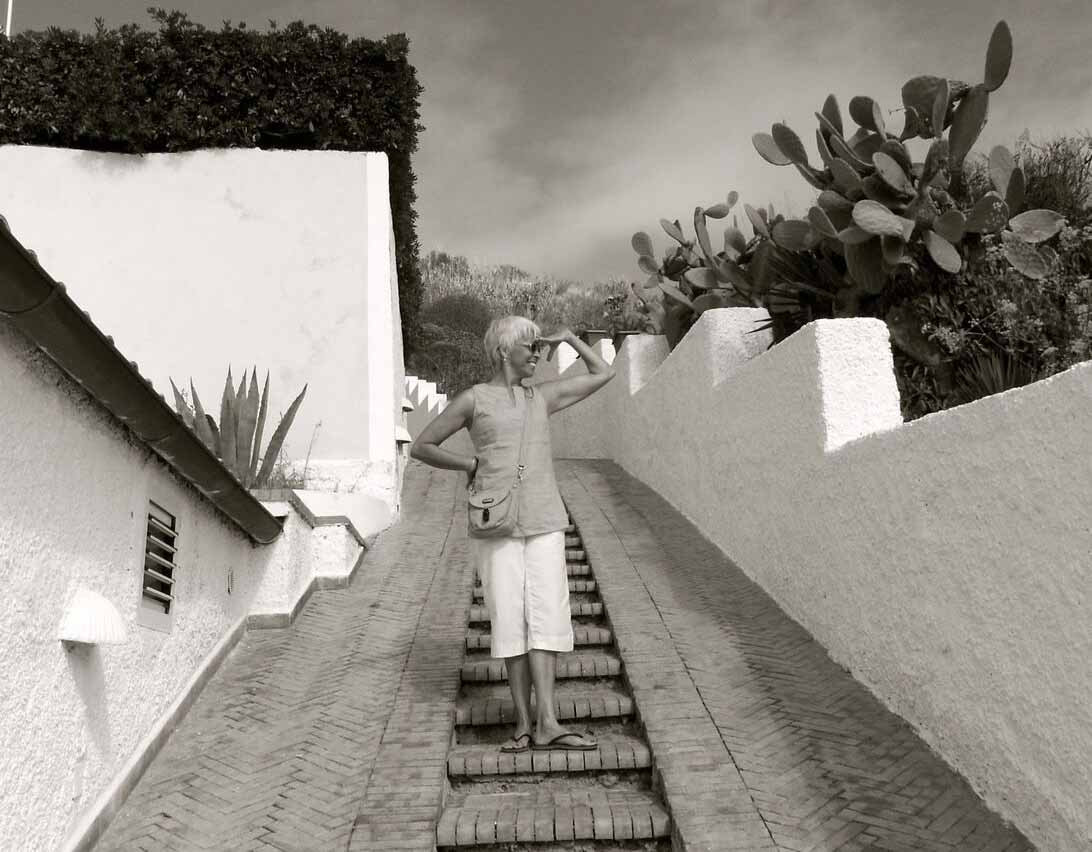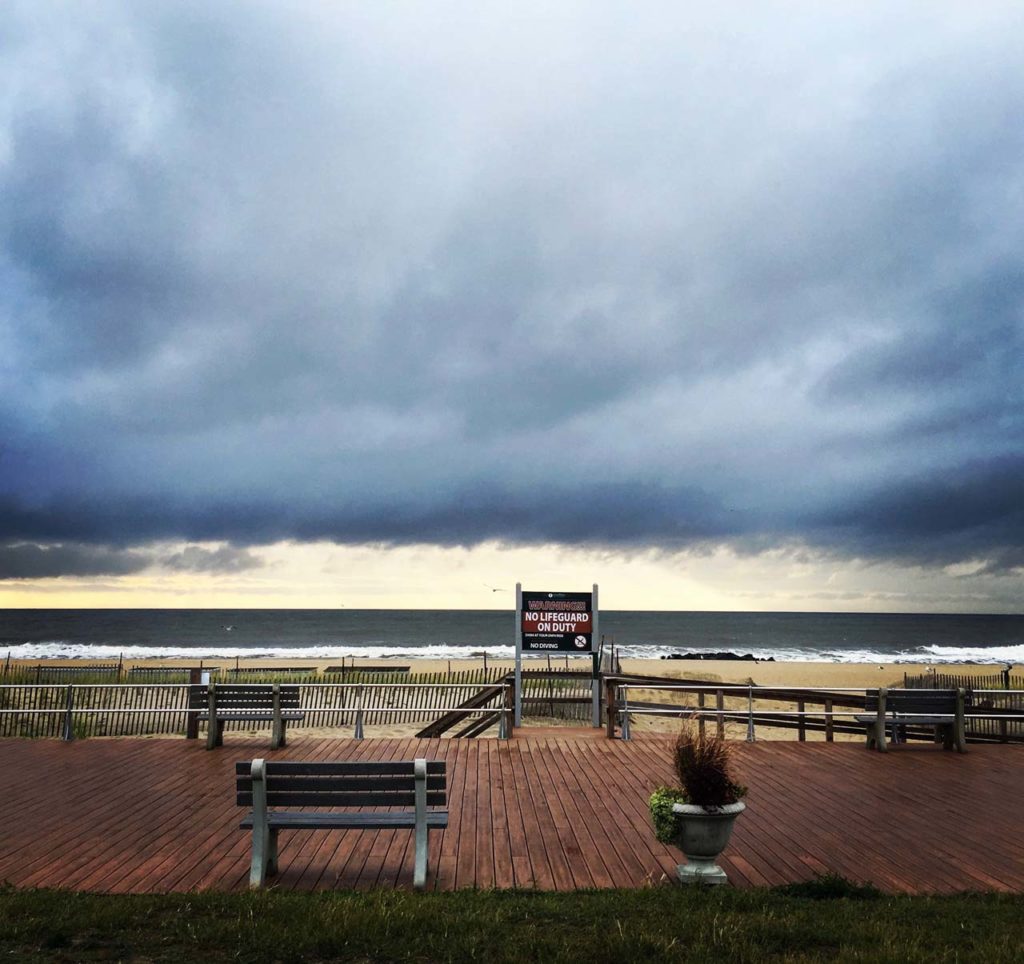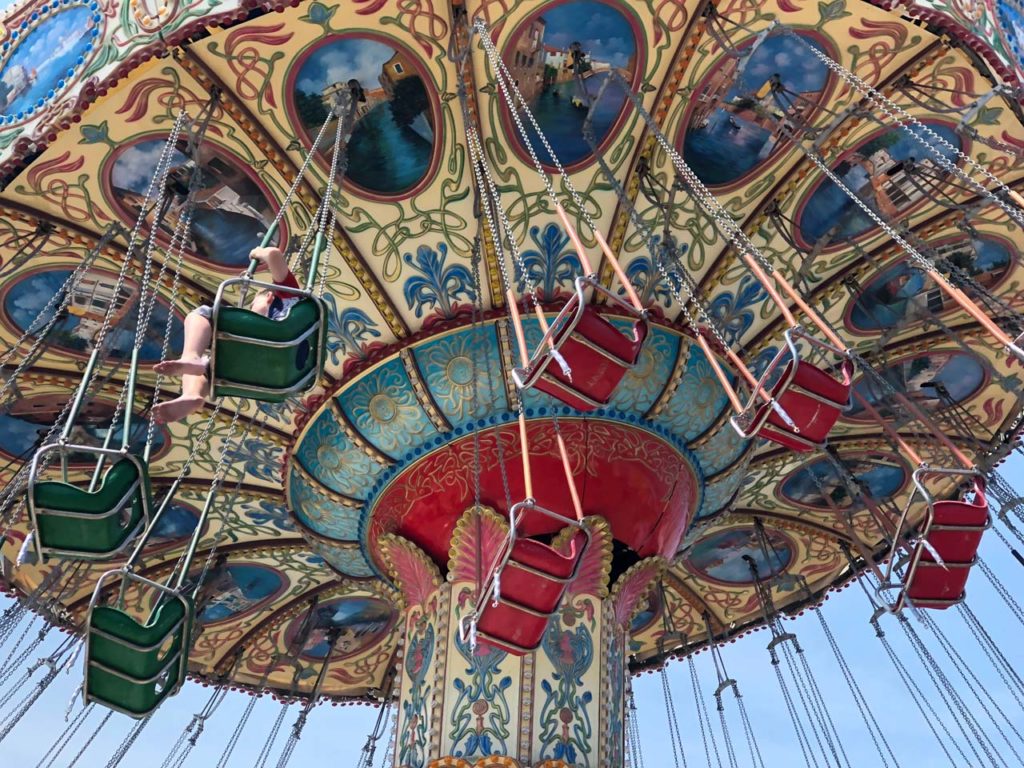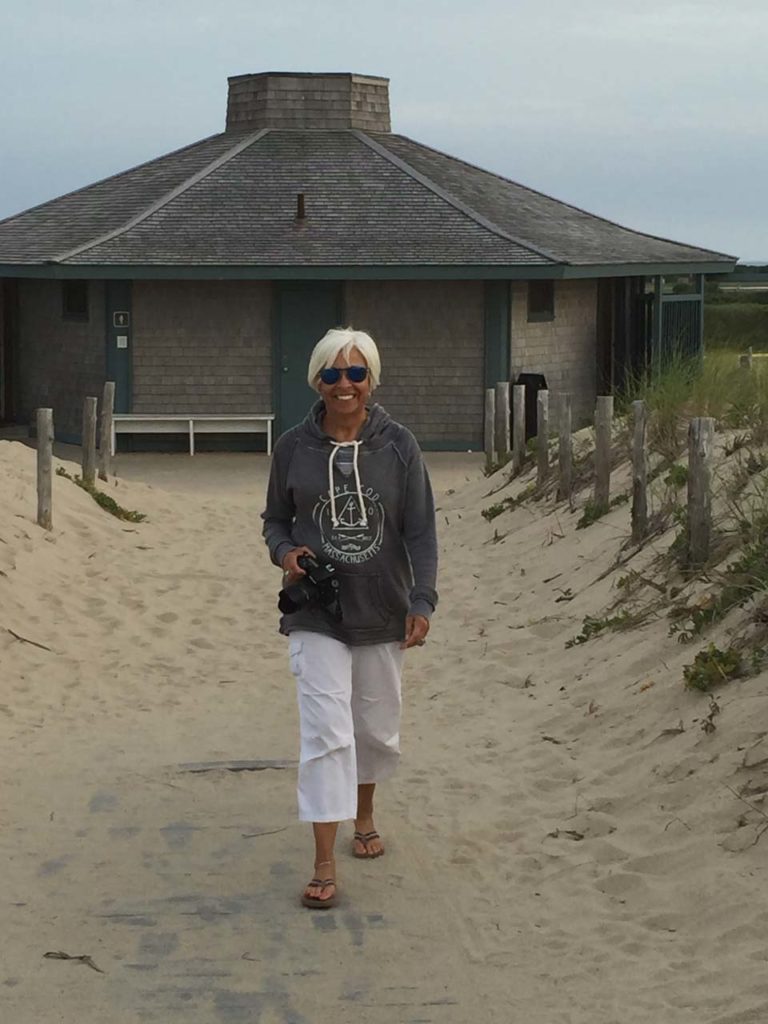An Eye for Humanity - The Compassionate Lens of a Shore-based Photojournalist
by Gilda Rogers, Industry Magazine, September/October 2018

From Asbury Park to Liberia, Ethiopia, and beyond, travels and other life experiences provide inspirational fodder for photojournalist MaryAnn Vitiello. An adventurer at heart, she’s trekked to more than 40 countries, observing the sublime to the ridiculous, and conveys those experiences through her photos. The human condition, she said, captures and drives her passion.

“Tibet was one of my favourite places to visit,” said Vitiello, a long time Jersey Shore resident currently residing in Interlaken. “I saw the most resilience there. I saw joy in such an oppressed community.” Resiliency of the human spirit is a common thread that runs through her art, particularly photos taken in Asbury Park, where she moved in 1993 before that city’s resurrection commenced, and where she began visually recording her surroundings.
“The old Asbury Park pictures were of decay,” she explained. “An image that got a lot of attention was someone shooting up. That’s when I started taking shots with an activist lens. The draw here has always been a community that’s artistic and activist. That hasn’t changed.” The pictures Vitiello takes these days represent people enjoying the shore. She relishes the “new and younger energy” in the area, celebrating and praising its newfound diversity.
Born and raised in Brooklyn, Vitiello’s journey as a photographer started at the age of 15 when she earned enough money to purchase her first camera, a Nikon F, while working at a Key Food supermarket. She enrolled at City University of New York in 1971, answering a calling to become a nurse, which ultimately, she said, enhanced her ability to see the humanity in all people. Now retired, Vitiello was a certified nurse practitioner specializing in HIV and AIDS care. In 1976, she joined the Peace Corps and served as a nurse in Liberia in North Africa for a year.

“My initial exposure working with other populations came from the Peace Corps,” she related. While working at Columbia University from 1999 to 2002 with the Maternal to Child Transmission Initiative, her experience as an HIV Perinatal Specialist took her to Kenya, where she became a woman on a mission, gaining expertise in how the virus is transmitted from mother to baby (primarily during pregnancy, childbirth or while breast feeding).
“To make sustainable change, I needed to be there for the women and children,” she said, her Brooklyn accent coming to the fore, adding that throughout her travels and in pursuit of a mission to help the vulnerable and ill, she was also raising her own three kids in Point Pleasant.
From 2002 to 2011, as senior advisor to the International Training and Education Center on Health at the University of Washington in Seattle, Vitiello became the global outreach coordinator for the President’s Emergency Plans for AIDS Relief under the Bush and Obama administrations. In that role, she used her training to make a difference in Ethiopia, where she lived alongside marginalized women and children in poverty, working to gain their trust. She called the experience one of her most daunting and challenging.

Before I could speak the language, I started to use photos to teach with,” she recalled, adding her camera was a saving grace. “What I was seeing was devastating. The camera gave me a little distance.”
Vitiello’s first one woman show, aptly titled “Resilience,” took place at Asbury Park’s Exhibit No. 9 Gallery last year. Her works are currently among those featured at the city’s Gallery 629 in the show “Portraits: Artists’ Interpretations of the Human Personality.” She believes the phrase, “There but for the grace of God go I,” is apropos to the life she has lived.
“I’ve been taking these images all my life,” she said. “We have to see the humanity in all people…that’s what I shoot.
MaryAnn Vitiello
vitiellophotography.com
Photography MaryAnn Vitiello’s “Resilience” at Exhibit NO. 9 in Asbury Park
by Christopher Benincasa, Culture Vultures, JerseyArts.com Arts Weekly June 6, 2017
Right now at Exhibit No. 9 gallery in Asbury Park, a photography show 40 years in the making, but never intended to be on display for an audience, is up through June 17th. The work of MaryAnn Vitiello ranges from portraits of the AIDS patients she has treated around the world as a nurse, to Cambodian landmine victims, to Asbury Park itself – her home since the early ‘90s. Beyond the urgency and tragedy found in her images, Vitiello says she is documenting miracles, and that, for her, it has been a “tremendous privilege.”
Culture Vultures: You are a veteran nurse – were you always an artist, too? Always a photographer?
MaryAnn Vitiello: No. I never thought of myself as an artist. I did start out as a music major when I first started college, and then went into nursing. I always liked taking pictures – starting when I was a teenager – but none of the pictures in this show were ever meant to be shown.
CV: You worked as an AIDS Nurse in Africa, and many other places. How did you end up in that part of the world doing that job?
MV: Why I got into the field was that I was concerned about the people who were coming down with this unnamed syndrome of symptoms. In the early ‘80s, the populations being affected the most were injection drug users, gay men, the Haitian community and some other marginalized groups. At the time this started happening, I had been a nurse for about 10 years.
As a nurse, I was concerned about this epidemic, and as a gay person I was really concerned that what they were initially calling “the gay plague,” GRID, was not getting any rapid response from the government – and thousands of people were dying. So, that’s what drew me to the work. I was doing volunteer work in Ocean County, NJ, and then I had the opportunity to work in one of the first AIDS clinical trial units in Newark, at Robert Wood Johnson Hospital, which provided experimental anti-retroviral therapy. That was around 1987.
CV: There are photos in this show that you took in Africa, Cambodia, India, China, Peru, Ethopia, Australia and Tibet. Were you working in all those countries?
MV: Most of them, yes. But some were just trips I took on my own – like India, Jordan, Cambodia.
CV: A photo-documentary body of work like yours is a concept we’re more used to seeing now because of social media – Instagram in particular – but, in your case, obviously, you didn’t have to manufacture an interesting life, or interesting travels abroad – and you weren’t looking for attention, let alone getting paid. I think that makes these photographs really unique.
MV: Yes, these days everybody documents their life and shares the images – their kids, vacations, whatever. I made these photographs for a variety of reasons – often simply because I was working in harsh conditions, no electricity, no running water, not many pleasant diversions – and so I would just go out with my camera.
When I was teaching I didn’t always have a very good mastery of the language that was spoken in the country I was in. I found that images, photographs, were really useful. I would use my own photographs of, for example, how to listen to a fetal heart rate the right way with a stethoscope. Many of the places I worked in were resource-limited environments, meaning we didn’t have a lot of technical stuff, we often didn’t have internet access – and so my camera became a very practical, versatile tool.
CV: One of the most shocking images in your show is a photo of heroin being injected into a wrist – it’s titled “Injection.” Taking that would make most people squeamish, but I guess that’s one of the main things you’re forced to get over in nursing school. That sort of brave-ness must come in handy for you when taking photos in some of the situations you’ve found yourself in.
MV: Well, that shot obviously makes a harsh statement, but it also projects the reality of what’s happening, and for people who don’t have or want access to that reality, it’s important – especially if those people are lawmakers or lobbyists, or if they are in other kinds of influential positions – that they understand what it looks like, that this is not very pretty. It’s like the old saying: A picture is worth a thousand words. Photography can be a teaching tool, and it can lead to action.
CV: Those two photos of the Syrian refugee crisis come to mind – the drowned child, Alan Kurdi, on the beach, and the wounded boy in the ambulance covered in blood and dust.
MV: Yes, exactly, those are really good examples. That child on the beach – the world saw that. And once you see something like that you can’t un-see it. It leaves a visual imprint on your soul.
CV: Were there times when you felt like a combat journalist?
MV: I guess sometimes I did. We call that, at least in my business, “real time” – when you’re out there in situations that have an urgency to them. The patients are lined up morning, noon, and night – it never really stops, and it can start feeling like that.
Many of my heroes are war photographers and documentarians who work in environments where you have to be really fast – there’s no time to get highly technical – you have to be fast because things are just happening really fast. That’s how you get the images. In situations that were very rough, in which people were very, very sick – usually not a time for taking photos – I would try to explain that these images could do some good down the road.
CV: After 40 years of working as a nurse and creating all of these pictures, do you dwell on the “why?” much? Especially since you didn’t consider yourself to be a professional artist?
MV: I never really dwelled on things like that while I was working or taking the photos, but of course I’ve had moments that demanded reflection. It’s interesting – it’s a balance between not thinking too much about it and over-thinking it. Certainly, at the beginning of the AIDS pandemic, there was no time. I had more than I could handle, and I was just working, working, working and then getting up the next day and doing it again – it was a frontline mentality.
CV: Since you weren’t out there shopping your work around, hoping for a big break as an artist, how did “Resilience” come together?
MV: Right – it was the polar opposite of that. I retired, and I say that loosely because nurses never really retire – we just, like, die at the end. But when I stopped working for the Department of Global Health in Seattle in 2013, I finally had the time to go through and digitize 40 years of photos so they could be seen – and for my kids and grandkids to see.
And so I started working on that about three years ago, without ever planning on having a show like this. But I started getting feedback, and it just took on a life of its own, and Exhibit No. 9 got involved and there you go – some things are just supposed to happen. I’m still getting used to people referring to me as “the artist.”
CV: You’re originally from Brooklyn and moved to Asbury Park in the early ‘90s, well before the revitalization of the town. You’ve built a life here, and Asbury Park is the subject of many of your photos.
MV: Living in the community I was working in was something I wanted to do. At first, we ran a health center out of an old shoe store. And then we ran one in the basement of a church.
CV: Asbury Park was really affected by the AIDS crisis, and that impact was at its peak when you moved in. Could you talk a little bit about that?
MV: To put it in perspective, Asbury Park is a 1.7 square mile town and it received a tremendous amount of federal funding to combat the AIDS crisis. It was hit hard for a variety of reasons – it had a marginalized population, and an undocumented population. There were many people here who were injection drug users. It was a hot spot for sex workers. And at that time – the early ‘90s – it was a medically underserved area. So, all the ingredients for HIV infection were here at that time. And that’s why Asbury Park received federal grants for prevention and treatment. And that’s why I came here in 1991 – to work within the federal program.
CV: And that photo of the heroin injection fits into this, right? That was taken in Asbury Park?
MV: Yes – we used my photos as support material in our requests for funding. It helped put a spotlight on what was happening here. Unlike now, back then Asbury was not a place that people visited. There are about 20 images in this exhibit that show what Asbury Park looked like back then. It was important to me to get these images in front of the people who were making the decisions – political and financial decisions. So, that’s where the photographs made a difference. We had been turned down at first. We showed them my photos, and it helped. And that was the beginning of the Prevention Resource Network, which is still viable today.
CV: Are any of your photographs hard for you to look at?
MV: Yes, there are a couple that stand out like that. Most of the people in these photographs are gone – if not all. And they died early deaths. And that’s very sad – but they’re living on to deliver a message.
CV: Of course, the theme of your work, at least in the photos selected for this 40-year retrospective, is resilience. That’s what you see in all this.
MV: It’s the emotional and spiritual resilience of people under the burden of circumstance. You don’t know how strong you are until strong is your only option. Resilience doesn’t necessarily mean survival – it’s doing the best you can do, no matter what the outcome is.
CV: You’ve talked about witnessing spiritual experiences while doing your work. Would you tell me about that?
MV: To witness another human being navigate a life-threatening illness is actually a privilege. Not everybody gets to do that. Not everybody wants to do that. For those of us who do – that’s a tremendous privilege. It’s a miraculous opportunity to grow.
Photography Exhibition Surveys 40-Year Career Overseas
by Billy Anania, Asbury Park Press, May 31, 2017
Some photographers take a long time to plot their work. But not MaryAnn Vitiello. No, she never had the option for meticulous preparation. As an AIDS nurse in Africa, her photography came more out of urgency and therapy. And yet, somehow, she captured so many beautiful and tragic moments that encapsulate a controversial era in world history.
Exhibit No. 9 is now hosting a special exhibition of Vitiello’s photography in downtown Asbury Park. “Resilience” premiered last weekend, and will be on display through June 17. The gallery is hosting a special event to coincide with Pride weekend in town, from 6 to 10 p.m. on Saturday, June 3.
The photographs in “Resilience” were taken over the course of nearly 40 years. Vitiello worked as a Nurse Practitioner in HIV and AIDS centers all over the world during this time. Her photography documents these years, providing insight into a time of strife and uncertainty.
Originally from Brooklyn, Vitiello first developed an interest in photography as a teenager. She joined the Peace Corps at the age of 21, and began visually documenting her experiences. Vitiello has worked with both film and digital photography over the course of her career.
In addition to her overseas work, she has also used her photos in academia. She has held faculty positions at Columbia University’s School of Nursing and the University of Medicine and Dentistry of New Jersey in New Brunswick. Through these endeavors, her photography has served both practical and artistic purposes.
“I’ve found that the best way to teach is by using pictures,” she said. “Forget the PowerPoints and all that other stuff. A lot of the pictures I took were clinical pictures of the work I was doing depending on what I was teaching.”
Vitiello was also active in Asbury Park’s community in the early ‘90s, when HIV was an emerging problem everywhere. The census was about 16,000 people, which she claims did not represent the abundance of undocumented immigrants. At the time, Asbury had the third highest seroprevalence HIV rate in the country, which was pretty bad for such a small state.
She decided to apply for a program for a federal grant, and at first got denied. In response, she went out and snapped a photograph of a heroin abuser shooting up in broad daylight. She re-submitted the grant application with this photo and others, and eventually received the grant. This led to the founding of Prevention Resource Network, an extension of the Visiting Nurses of Central Jersey.
The medical perspective adds another interesting layer to her work. The photos therefore speak to her nature as a person, an artist and a Monmouth County resident. Vitiello currently resides in Interlaken with her family after years of travel.
A sense of empathy and admiration runs through this series, and Vitiello captures the entire emotional spectrum through her portraits, landscapes and abstractions. The artist claims that she uses her camera to separate from instances of intense reality.
“I think my initial attraction to photography as an adult was the fact that it created a distance between me and what I was seeing,” she said. “Because sometimes that was very harsh. Some things are hard to face, but they are easier for me to look at through a lens. When I’m taking pictures I don’t think too much. For me, it comes very automatically. It’s relaxing and therapeutic in that way.”
She recalls a situation in Ethiopia when a child was hit by a car and died in her arms. It is this type of experience that symbolizes her outward wisdom and empathy.
Of particular note is a photo of Cambodian land mine victims playing musical instruments, with their prosthetic legs resting beside them. Vitiello is the only one focusing on the fake limbs here, while their owners are lost in the performance. This juxtaposition brings a sense of relief to the viewer, as the plight of an entire demographic is temporarily subdued by musical therapy.
It is these stories of perseverance that inspire Vitiello. Through her photographs, she emphasizes moments of spirituality, and humanity’s ability to practice resilience under the burden of circumstance.
“I’ve always been particularly inspired and intrigued by people who exhibit strength in dire situations, despite their circumstances, such spiritual, physical and emotional resilience,” she said. “It’s just been a word that I find to be a comfort. I use it with patients. Especially when you can’t fix something. I think the transformation that happens in these cases is really a spiritual experience to witness first-hand.”
In addition to Africa, Asia and the United States, photos in “Resilience” were taken in China, Peru and Australia. All photographs in the exhibition were printed by Exhibit No. 9 co-owner Tom White at the gallery’s in-house printing studio, 9 Surf Editions.
